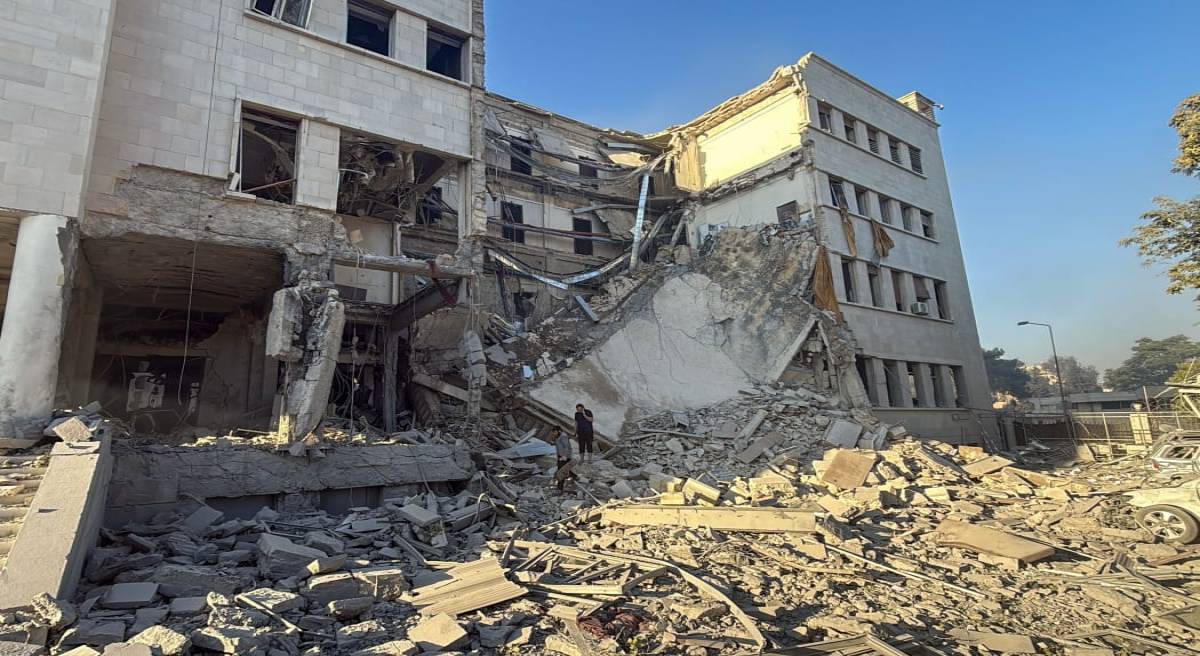1396 Views
Israel’s Shadow War in Suwayda: How Damascus’s Retreat Fueled Syria’s Chaos
The Suwayda crisis in its final stages began on Friday, July 11, when a group of armed Sunni Bedouins attacked and seized a vegetable cart driven by a Syrian Druze on the Suwayda–Damascus road. This was certainly not an isolated incident or unrelated to the longstanding tensions between Bedouin tribes and the Druze in the region. For decades, relations between these two communities—whether in the west, north, or east of the province—have been marked by mistrust and strain.
In the three months preceding the Suwayda clashes, several direct and indirect negotiations were held between Syrian officials and the Israeli regime, mediated by Turkey, Arab countries, and the United States, aiming to reach a security agreement. The Syrians wanted the agreement to follow the terms of the 1974 disengagement accord, which would require Israeli withdrawal from areas under its control since the fall of Assad’s regime and cessation of its repeated strikes on Syrian military positions. In exchange, Syria offered guarantees that it would pose no security threat to the Jewish state. With such divergent views on a potential agreement, the talks collapsed.
Nevertheless, the collapse of negotiations did not prevent the Syrian army from moving southward, prompting Israeli intervention. This forced Suwayda officials, supported by Sheikh al-Aql Yusuf Jarbou’, to reach an agreement with local leaders on July 16. The deal included a ceasefire, full reintegration of Suwayda into the Syrian state, withdrawal of the army, and retention of only general security forces. But this truce quickly unraveled. Sheikh al-Hijri issued a statement rejecting the deal, insisting that the fighting would continue until all Syrian government forces left Suwayda. Simultaneously, the Israelis announced they would continue attacking Syrian forces and institutions until a complete withdrawal.
These developments triggered new mediation efforts by Turkey, Saudi Arabia, and the U.S., culminating in a temporary understanding by the night of July 14–17. In exchange for the full withdrawal of Syrian military and security forces from Suwayda, Israeli airstrikes would cease. The humiliating nature of this agreement led Syrian President Ahmad al-Shar’a to deliver a morning address to the Syrian people, justifying the withdrawal as necessary to prevent a devastating war with the “Israeli entity.”
Consequences of Israeli Intervention
Under pressure from Israeli attacks, Damascus's forced withdrawal made the Syrian government appear fractured and incapable of maintaining sovereignty over a small province. The July 19 agreement came just as Damascus was regaining initiative, but Israel, after deploying thousands of tribal fighters across northern and western Suwayda and into the city itself, could no longer intervene without causing massive destruction. Many Syrians criticized their new leadership for accepting the deal prematurely, attempting a ceasefire, and withdrawing tribal forces before resolving the conflict with al-Hijri and his followers. Despite tribal mobilization strengthening Syria’s position, the government remained precarious.
Without Israeli intervention, there is little doubt that Damascus could have resolved the Suwayda crisis within days and with minimal casualties. Israel’s involvement added a new layer of complexity, sidelining the Syrian government in its own territory. Although many Druze activists sided with the state, Israel sought to portray the conflict as a sectarian confrontation between the Druze minority and the Sunni Syrian state. Yet, the strategic motives behind Israel’s actions extended beyond supporting a Druze faction—even one potentially allied with Israel.
Like any colonial settler entity fundamentally alien to its Arab and Islamic surroundings, Israel was born with a genetic sense of threat and vulnerability. To compensate, it has always needed to project counter-threats and maintain a perpetual state of war. Since its founding, Israel has launched ten major wars: 1948, 1956, 1967, 1973, 1982, 2006, 2008, 2012, 2014, and the ongoing war that began in October 2023. From Iran to Egypt, from the Black Sea to the Arabian Sea, Israel has become a multifaceted threat to its neighbors, particularly Palestine, Jordan, Lebanon, and Syria.
Israel must continuously weaken and destabilize its immediate neighbors to preserve its existence and regional dominance. Just as it undermines Jordan’s sovereignty, disrupts Lebanon’s power centers, and wages unending war on Palestinians, it will not allow Syria to regain its unity, power, or stability. Israeli obstruction of Syrian sovereignty in Suwayda mirrors its broader strategy of intervention to prevent resolution in northeastern Syria and the Jazira region. The motive is not sympathy for the Druze or Kurds, but rather a desire to deepen Syria’s fragmentation and internal conflicts.
Ultimately, while Syria’s new leadership believed that prioritizing economic development, fostering ties with the West—particularly the United States—and offering comprehensive security guarantees to the Israeli regime would shield the country from threats and dangers, recent developments have revealed otherwise. They demonstrate that the new Syria will be unable to defend itself against the strategic threats posed by Israel unless, on one hand, it strengthens its defensive capabilities, and on the other hand, makes swift efforts to restore the unity of its territory and people. Achieving these two objectives will be difficult—if not impossible—without forging close alliances with fraternal and friendly powers in the region and beyond, rethinking and expanding the scope of the new ruling system, and developing a defense policy based on cooperation between state institutions and the various segments of the Syrian populace.
*Translated by Ashraf Hemmati from the original Persian article written by: Hakimeh Zaeem Bashi

Comment
Post a comment for this article